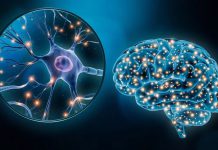A new study conducted by the researchers of Yale University and Weill Cornell Medicine has found that using a “safety signal” could help relieve some fear and anxiety.
The study, conducted on both humans and mice, was published in the journal Proceedings of the National Academy of Sciences.
A safety signal could be any symbol or sound that is never identified with a negative event.
Study co-author Paola Odriozola from Yale University said, “A safety signal could be a musical piece, a person, or even an item like a stuffed animal that represents the absence of threat.”
The researchers explained that the safety signal approach is different from a type of cognitive behavioral therapy (CBT) called exposure-based therapy, which includes exposing patients to the sources of fear until they learn that the source does not cause a significant threat to them, reducing their fear and anxiety.
Unfortunately, exposure-based therapy does not help most patients with anxiety disorders.
Senior study author Dylan Gee from Yale University said, “Exposure-based therapy relies on fear extinction, and although a safety memory is formed during therapy, it is always competing with the previous threat memory. This competition makes current therapies subject to the relapse of fear, but there is never a threat memory associated with safety signals.”
The study looked at both humans and mice who were subjected to associate both threatening and non-threatening shapes. The researchers found that adding the non-threatening shapes – the safety signals – suppressed the participants’ fear and anxiety.
The researchers found that in the participants subjected to safety signals, there was an activated neural network in the brain imaging studies than participants subjected to exposure therapy. The findings suggest that safety signals could be an effective tool in treating anxiety and fear, along with current therapies such as CBT and anxiolytics. Gee said, “Both cognitive-behavioral therapy and antidepressants can be highly effective, but a substantial part of the population does not benefit sufficiently, and the benefits they experience don’t hold up in the longer term.”























